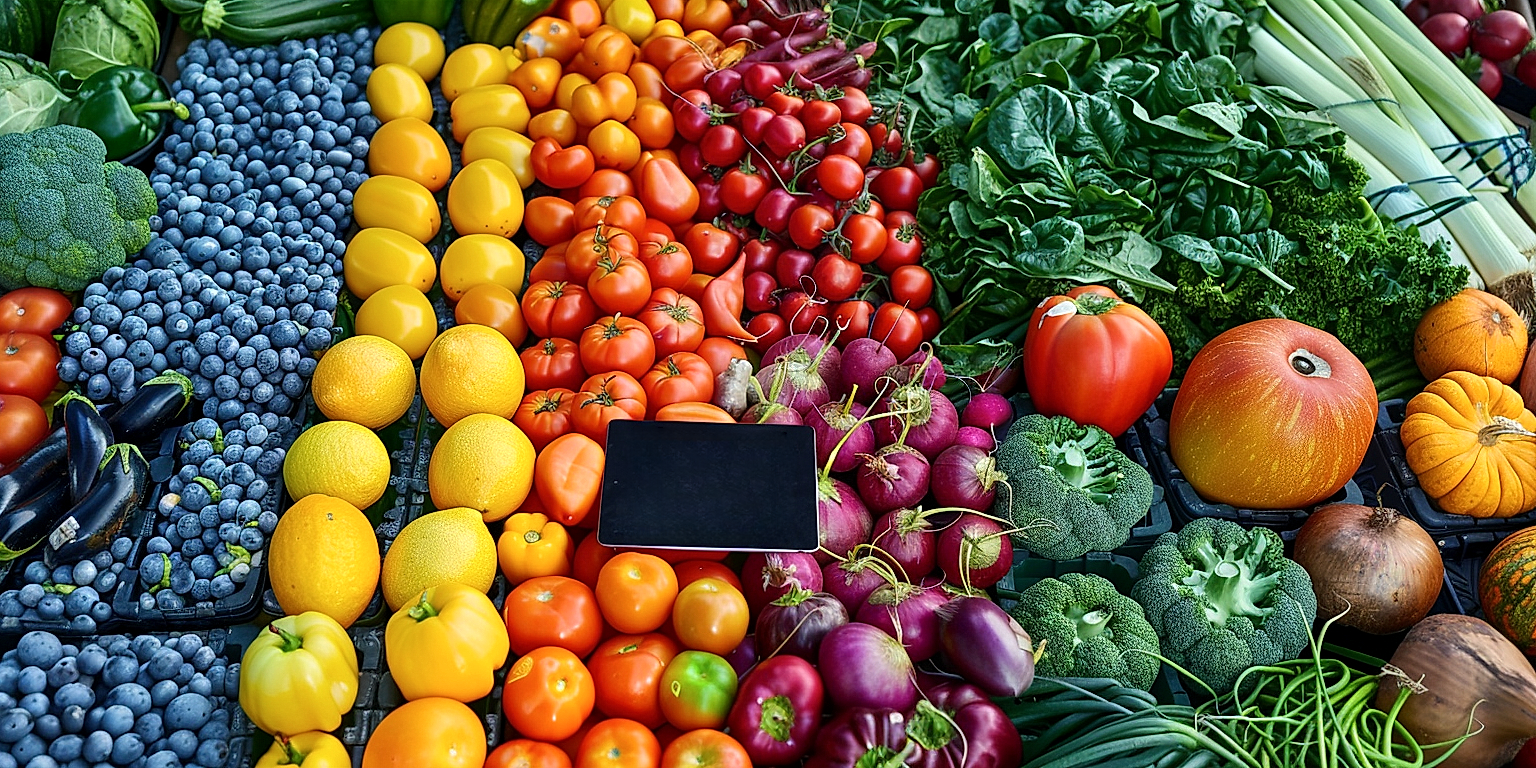Efficiency and productivity reign supreme in the world of produce shipping.
It is an industry that understands the profound impacts delays and errors can have on freshness, quality, and overall consumer satisfaction.
Modern logistics solutions have risen to this challenge, revolutionizing the way this sector operates.
From intelligent tracking systems to automated warehouse technology, these advancements are driving unprecedented transformations.
Capitalizing on these tools isn’t just an option, but an imperative to stay competitive.
We delve into how these game-changing solutions are positively altering this dynamic business landscape.
Contents
Logistics Solutions Transforming Produce Shipping Business
1. Real-time GPS tracking for cargo
The real-time Global Positioning System (GPS) tracking for cargo is an innovative technology that has revolutionized the logistics solutions in the produce shipping business.
Its main functionality is that it allows companies to monitor exactly where their shipments are at any given moment and can assist in predicting shipment arrivals with extreme precision.
Both of these features are crucial as they help minimize the risks of in-transit loss or damage of goods.
By leveraging this technology, companies can gain comprehensive visibility into their supply chain, thus improving efficiency and productivity.
In the world of fresh produce shipping, the utilization of real-time GPS tracking for cargo has a unique benefit; it helps maintain the quality of perishable items by ensuring that the time from field to market is minimized.
This is because long transit times can lead to produce reaching the end consumer in a deteriorated state, thereby negatively affecting producers’ revenues.
Furthermore, real-time GPS tracking provides logistics companies with valuable data such as vehicle speed, idling time, and driver behavior.
Such data analysis can further play a pivotal role in improving operational efficiency, reducing costs, and minimizing environmental impact.
In unexpected situations, like a delay due to traffic or an accident, real-time GPS tracking systems also enable companies to reroute their shipments efficiently, thereby avoiding further delay and ensuring timely delivery.
Additionally, the transparency provided by real-time GPS tracking devices can be used by companies as a major selling point while dealing with clients.
Clients can also track their own shipments, offering them peace of mind and boosting their trust and confidence in the logistics company.
Several collaborations are now emerging with third-party logistics providers and technology companies to develop more advanced IoT-enabled real-time GPS solutions, making the logistics process even more efficient and transparent.
Although real-time GPS tracking in itself cannot solve all the logistical challenges in the produce shipping business, it’s an important ingredient in the overall mix of solutions designed to maximize efficiency.
Indeed, when GPS technology is integrated with other systems such as fleet management software, cargo temperature monitors, and automated inventory management, it becomes a powerful tool that can significantly transform the logistics process.
Thus, real-time GPS tracking for cargo presents a significant step towards increased efficiency, accuracy, and transparency within the produce shipping business.
2. Comprehensive Cold Chain Management Systems
The rapid progress in technology has significantly enabled the transformation of produce shipping businesses.
Among these technological strides, one that stands out is the implementation of comprehensive cold chain management systems.
A cold chain management system is a temperature-controlled supply chain, designed to maintain and monitor an optimal environment for perishable goods from the point of harvest to the consumer.
Through this system, logistics organizations can significantly reduce food waste and ensure the delivery of fresh produce.
This has not only enhanced the efficiency of operations but has also increased profitability for businesses in this sector.
The use of smart sensors in these systems has given businesses the capability to persistently monitor the temperature and swiftly act upon any irregularities.
This proactive approach ensures the quality of the products doesn’t deteriorate in transit, consequently strengthening the customer trust and brand reputation.
The cold chain management systems also incorporate quality test mechanisms that assess the produce for any potential defects or spoilage.
This helps in reducing the risk of providing damaged products to the end-users, thus maintaining customer satisfaction levels.
Another significant feature of this system is its ability to accurately predict the shelf-life of products.
It evaluates the storage conditions and transport duration to provide businesses with an estimated timeline, assisting them for better inventory management.
Moreover, these systems are also playing a crucial role in contributing to the sustainability goals of the companies.
By optimizing the use of refrigeration and reducing the energy waste in warehousing and transit, these systems provide a greener alternative to traditional methods.
This can give companies an edge in today’s competitive market, where consumers are increasingly choosing businesses with a focus on sustainability.
Investing in comprehensive cold chain management solutions can provide a revolutionary leap in the logistics scenario of produce shipping businesses.
These technological advancements not only enhance the core operations but also pave the way for future developments in this sector.
3. Advanced IoT Devices for Quality Monitoring
The integration of advanced IoT devices into produce shipping serves as a transformative solution.
These devices allow for the constant monitoring and controlling of the quality of products throughout the shipping process.
By continuously analyzing environmental conditions such as temperature, humidity, and light, IoT devices can ensure ideal conditions for the produce.
This meticulous monitoring greatly contributes to preventing wastage due to spoilage and extends the products’ shelf life.
By utilizing IoT devices, produce shippers can guarantee the optimal quality of their products upon delivery while also reducing waste.
This has a direct effect on a company’s profit margins, as the profitability can significantly be increased through reducing product loss.
The use of IoT not only optimizes the conditions for transport but also provides valuable data for future planning.
The data collected by advanced IoT devices is accessible in real-time and can be used to flag any discrepancies immediately.
This instant intervention results in the saving of time, effort, and expenses by troubleshooting potential disruptions swiftly.
Additionally, these devices can also play a huge role in facilitating traceability and transparency.
By having a deep understanding of the journey their product has undertaken, businesses can maintain consumer trust by ensuring them about the high-quality standard and safe delivery of the produce.
Quality checks have always been a critical aspect of product logistics, with traditional methods being labor-intensive and not always accurate.
However, with IoT device integration, this aspect is not only automated but also made significantly more accurate.
Developing a smart logistic model that integrates such IoT devices can help shipping businesses keep up with the increasing consumer demand for transparency and high-quality products.
Suffice to say, the logistics of produce shipping are becoming smarter and more efficient due to the advent of advanced IoT devices.
4. Drone Technology for Faster Delivery
With the rapid advancement of technology, drone technology has emerged as an innovative solution in the field of logistics and produce shipping.
This cutting edge technology offers a deft solution to one of the industry’s biggest challenges: timely and efficient delivery.
Unlike traditional delivery methods, drones can navigate through congested urban landscapes and remote rural areas with ease, accelerating the delivery process significantly.
The unmanned aerial vehicles are capable of reducing transportation time, optimizing delivery routes and minimizing human error.
Drone technology is therefore paving the way for next-generation delivery systems in the produce shipping business.
Leading logistics companies around the world are investing heavily in drone technology to offer real-time delivery and reach areas that are otherwise difficult to access.
Moreover, drones are equipped with integrated GPS trackers and automation features, ensuring precise, safe and reliable delivery of produce.
This unprecedented level of precision makes for a seamless and error-free delivery process, increasing customer satisfaction and loyalty.
In terms of cost efficiency, drone delivery eliminates a significant amount of labour costs associated with traditional delivery methods, making them a cost-effective solution for the produce shipping business.
Drones not only provide faster delivery but also contribute to sustainability as they generate lower carbon emissions compared to traditional delivery methods.
Taking into consideration the increasing consumer demand for fresh and high-quality produce, drone technology serves to reduce produce spoilage during transportation through its speedy delivery.
It is clear that drone technology has the potential to transform the landscape of the produce shipping business, providing solutions that are faster, greener, and more efficient.
As this technology continues to evolve, the role of drones in logistics and produce shipping is set to become even more crucial.
However, one cannot overlook the potential challenges and regulatory hurdles associated with drone technology implementation.
Despite the hurdles, the significant benefits offered by drone technology undoubtedly make it a game-changer in the produce shipping business.
5. Automated Inventory Management Software
The rise of automated inventory management software is undoubtedly a significant leap in the field of logistics solutions, particularly when it comes to shipping produce.
One of the most demanding aspects of the produce shipping industry is maintaining continuous and updated records of stock levels.
However, with automation infused into the inventory process, this extensive and labor-intensive task becomes significantly simplified.
A key feature of automated inventory management software is its capacity for real-time tracking of produce, from the point of its origin to eventual delivery.
This kind of software can review the state of inventory at any given point, promptly alerting warehouse management to any potential shortages or surpluses.
The transparency afforded by automated inventory management software invariably leads to improved efficiency and reduced wastage, both critical components of successful produce shipping operations.
The software can also predict future inventory needs based on past trends and sales records, enabling businesses to better plan their buying and manufacturing schedules.
Additionally, the software aids in streamlining warehouse operations by storing all essential product information in a centralized system, making it easier to locate specific produce when needed.
This not only speeds up the delivery process, but also drastically reduces the likelihood of errors in order picking.
Typically, these systems come with user-friendly interfaces, making them easy to use and further enhancing efficiency within the warehouse.
Highlighting some of the benefits of using such systems would emphasize the drastic reduction in paperwork and manual labor, the elimination or at least minimization of human errors, and the ability to manage larger inventory volumes seamlessly.
Importantly, the use of automated inventory management software results in real-time visibility of stock levels across all sales channels, making it much easier to coordinate and manage multichannel sales strategies.
This visibility also allows for the early detection of any potential stock issues, enabling businesses to act in time to avoid supply chain disruptions.
Modern automated inventory systems even offer options for integrating with other logistics technologies, such as real-time GPS tracking for cargo and advanced IoT devices for quality monitoring.
In the context of transforming produce shipping businesses, the role and impact of automated inventory management software is proving to be invaluable.
Investing in such systems not only boosts efficiency and productivity, but it also creates opportunities for significant cost savings and growth in the long term.
The Bottom Line
Advancements in technology continue to revolutionize the supply chain landscape.
Real-time GPS tracking has reshaped cargo monitoring, increasing transparency and efficiency.
Embracing comprehensive cold chain management systems allows for meticulous control over perishable goods, drastically reducing waste and ensuring consistent product quality.
The use of advanced IoT devices has escalated the capability of quality monitoring to uncharted territories, fostering a newfound sense of precision and reliability.
Drone technology has emerged as a promising solution to expedite delivery services, promising a transformative effect on logistics.
Lastly, automated inventory management software has streamlined warehouse operations, mitigating human error, and boosting productivity.
In this era of digital innovation, embracing these trends is no longer optional but essential to remain competitive in the increasingly technology-driven supply chain industry.




